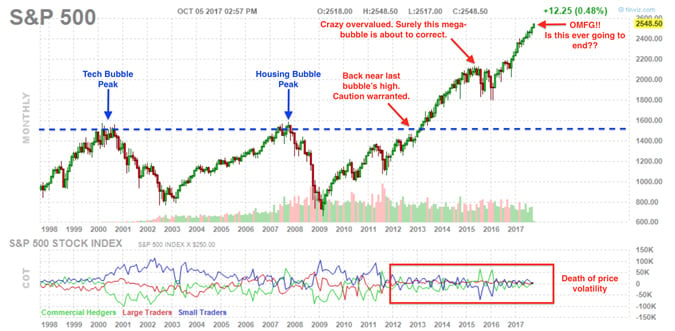Apparently Treasury Secretary, ex-Goldman Sachs banker Steven Mnuchin, has threatened Congress with stock crash if Congress doesn’t pass a tax reform Bill. His reason is that the stock market surge since the election was based on the hopes of a big tax cut. This reminds me of 2008, when then-Treasury Secretary, ex-Goldman Sachs CEO, Henry Paulson, and Fed Chairman, Ben Bernanke, paraded in front of Congress and threatened a complete systemic collapse if Congress didn’t authorize an $800 billion bailout of the biggest banks.
The U.S. financial system is experiencing an asset “bubble” that is unprecedented in history. This is a bubble that has been fueled by an unprecedented amount of Central Bank money printing and credit creation. As you are well aware, the Fed printed more than $4 trillion dollars of currency that was used to buy Treasury bonds and mortgage securities. But it has also enabled an unprecedented amount of credit creation. This credit availability has further fueled the rampant inflation in asset prices – specifically stocks, bonds and housing, the price of which now exceeds the levels seen in 2008 right before the great financial crisis.
However, you might not be aware that Central Banks outside of the U.S. continue printing money that is being used to buy stocks and risky bonds. The Bank of Japan now owns more than 75% of that nation’s stock ETFs. The Swiss National Bank holds over $80 billion worth of U.S. stocks, $17 billion of which were purchased in 2017. The European Central Bank, in addition to buying member country sovereign-issued debt is now buying corporate bonds, some of which are non-investment grade.
…click on the above link to read the rest of the article…










